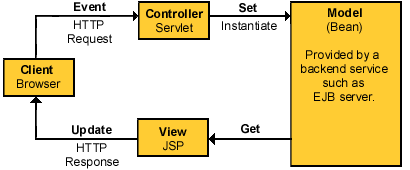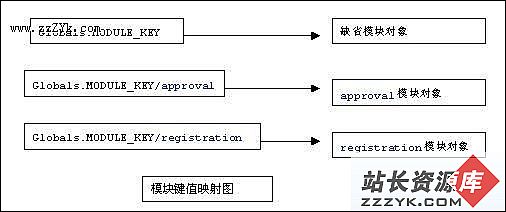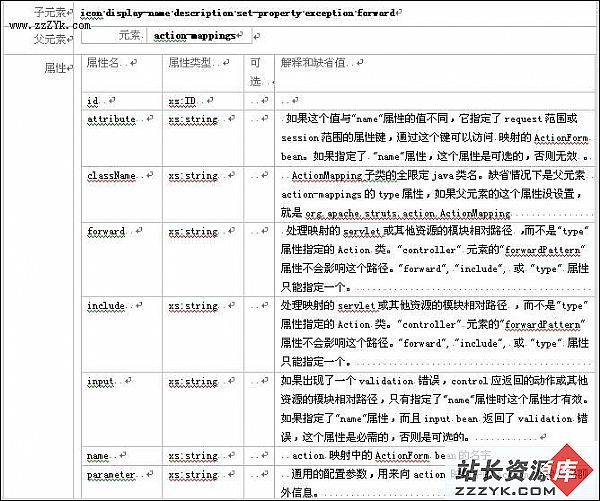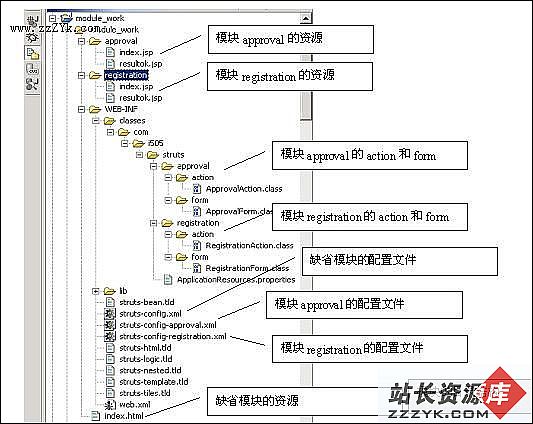当前位置:编程学习 > JSP >>
答案:27) How are servlets and JSP pages related? TOC
JSP pages are focused around HTML (or XML) with Java codes and JSP tags inside them. When a web server that has JSP support is asked for a JSP page, it checks to see if it has already compiled the page into a servlet. Thus, JSP pages become servlets and are transformed into pure Java and then compiled, loaded into the server and executed. Different JSP implementations do this in more or less efficient ways.
28) Any good web sites for up to date activities in the Java/JSP/Servlet world? TOC
The following web sites contain information about JSP:
An IBM Tutorial on JSP: http://www.software.ibm.com/developer/education/java/online-courses.html
An IBM Red Book : http://www.redbooks.ibm.com/abstracts/sg245423.html
Other IBM Information: http://www.software.ibm.com/webservers/appserv/doc/v20dcadv/doc/index.html
JSP-Resource Information - http://www.jspin.com/ is quite comprehensive on sites and articles.
JSP Tags is a site for Taglibs - http://jsptags.com/
The following web sites focus on JSP solutions
Servlets Taverne - http://www.interpasnet.com/JSS/
Oi Servlet World - http://i.am/servletforme
Web Development with JSP - http://www.burridge.net/jsp/
29) How do I force a user to log in? TOC
From: Andre Richards <AndreRic@MWEB.CO.ZA>
I did as follows:
On every page which must be authenticated, I check for a user ID in the session object - if it doesn't exit, I do a redirect to a login page, passing the url the user was trying to access as a parameter.
On the login page, if the user successfully logs in, I create a session for him/her, and add the user ID to the session. I then redirect back to the original page the user tried to access. This way, even if the user bookmarks a page, he/she will be asked to login once the session has become invalid.
Some code:
On every page I add the following:
HttpSession session = request.getSession(true);
if (session.getValue("CustomerID") == null) {
response.sendRedirect (response.encodeRedirectUrl
("Login.jsp?Origin=SharePortfolio.jsp"));
}
else {
// the rest of the page ...
In Login.jsp once the user has provided the correct logon credentials:
session.putValue("CustomerID", CustomerID);
response.sendRedirect(response.encodeRedirectUrl(request.getParameter("Origin")));
--------------------------------------------------------------------------------
Another developer has a different approach:
From: Christopher Cobb <ccobb@usgs.gov>
After researching several approaches, I have finally settled on the following approach. I would like to hear how others
are solving this problem. (FAQ maintainers note: This syntax won't work with JSP 1.0)
1. User accesses GuardedPage.jsp via
http://localhost/path/to/GuardedPage.jsp
2. GuardedPage.jsp includes a login checking page:
<!--#include file="/admin/" file="LoginChecker.jsp" -->
Every page that needs to be login-protected should include this file (which, depending on how your site is set up, may be
every page.)
3. LoginChecker.jsp accesses a bean that does the login checking:
<USEBEAN lifespan="session" name ="loginChecker" type="package.LoginChecker">
<setfromrequest beanproperty = "*">
</USEBEAN>
4. The LoginChecker bean has a property 'loggedIn'. (It also has properies for Username and Password, and a
processRequest() method, which are used later).
LoginChecker.jsp checks the value of the loggedIn property. If it is not true (i.e., the user is not logged in), a login
page is displayed:
<excludeif property ="loginChecker:loggedIn" value = "true">
<FORM action="/servlet/DBAccess/path/to/GuardedPage.jsp" method="post">
Username: <input name="userName" size="15" maxlength="15" >
Password: <input type="password" name="password" size="15" maxlength="15">
<input type="submit" name="loginUser" value="Submit">
</FORM>
</excludeif>
The first time through, this bean will be 'empty' and the loggedIn property will not be set. The login form will therefore
be displayed.
5. There is a little trick in the action clause above. When the user types in his login info and presses submit, the
invoked URL is
/servlet/DBAccess/path/to/GuardedPage.jsp
The action passes through the servlet DBAccess, then continues on to our original page. This servlet does nothing more
than attach an open database connection to the current session:
session.putValue("open.connection", connection);
The servlet then picks up the trailing part of the URL with:
String trailingURL = request.getPathInfo();
It then calls forward() to pass control back to the requested page. In this example, the new page happens to be the same
as the page we came from.
getServletConfig(
).getServletContext(
).getRequestDispatcher(response.encodeURL(trailingURL)
).forward(request,response);
6. Now we are back to our original page and the logginChecker bean gets invoked again. Because of the:
<setfromrequest beanproperty = "*">
in the loginChecker USEBEAN tag, and because our username and password field names in the LoginChecker.jsp page match our
bean's property names, the username and password that the user typed in get 'magically' populated in the corresponding
properties of the bean.
7. The LoginChecker bean has a processRequest() method which checks to see if a username and password has been supplied.
If so (and if we are not logged in), it performs a database lookup to log the user in. If the lookup is successful, the
loggedIn property is set to true.
8. We are finally back to our GuardedPage.jsp page. It will probably not want to display itself unless the user is logged
in. The page should therefore only be included if loggedIn is true:
<includeif property="loginChecker:loggedIn" value="true" >
The contents of GuardePage.jsp are displayed only if loggedIn is true.
</includeif>
We're done! GuardedPage.jsp is only displayed if the user is logged in. If the user is not logged in, a login page is
displayed, which if successful, returns the user to the original page.
9. There is one small cleanup which is needed in Step 4. As coded above, a passthrough servlet is used to attach a
database connection to the session. If the user repeatedly fails to login, the servlet prefix will get repeatedly
pre-pended to the URL. Furthermore, the 'current page' is hardcoded into the LoginChecker.jsp page which restricts it's
reusability. A little javascript fixes both of these problems. The following javascript should be used in place of the
<FORM> tag in Step 4. above.
<script language="javascript">
<!--
if (document.location.pathname.indexOf("/servlet/package.DBAccess") == 0)
document.write(
'<FORM action="' +
document.location.pathname +
'"method="post">');
else
document.write(
'<FORM action="/servlet/package.DBAccess' +
document.location.pathname +
'" method="post">');
//-->
</script>
30) So how can a newbie get started with JSP? TOC
See the QuickStart section of the JSP Book at http://www.esperanto.org.nz/jspbook
31) How can I ensure that session objects stay in existence when the web server restarts? TOC
上一个:JSP - FAQ (3)
下一个:JSP - FAQ (5)
- 更多JSP疑问解答:
- jsp新手求指导,不要笑!
- 如何让一个form提取的值传递给多个jsp?
- DW中,新建的html页面能否有jsp或php代码?
- jsp 如何限制表单,实现只能填写特定的数据。
- jsp 和javabean结合的程序有问题
- 从数据库里取出的数据如何传递到另外的jsp页面中
- 你好,ext嵌入那个jsp页面,是不是还需要加上一些插件啊,不太懂,麻烦你了。
- JSP不能处理所有问题吗?还要来一大堆的TLD,TAG,XML。为JSP 非要 Servlet 不可吗?
- 光标离开时全角转半角在jsp中怎么实现
- jsp 页面 打开 pdf 文件 控制大小 和 工具栏 能发份源码么 谢啦
- jsp页面点保存按钮,运行缓慢,弹出对话框提示
- jsp刷新页面如何不闪屏
- jsp 与html 的交互问题?
- jsp小数显示问题 例如 我在oracle 数据库中查询出来的是 0.01 但是在jsp页面上就显示成 .01 没有前面的0
- jsp中日历控件





